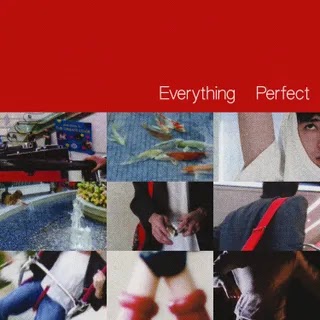Sasami Ashworth’s second solo album melds two distinctively 1990s sound worlds as it asks: Can a song ever make it all the way to another person?
SASAMI’s second album ends with a song that plays almost like a fable. A singer hears an astonishing melody in her head. She writes it down so that, later, she can sing it to her love. When she does, what comes out is “not a love song—just a beautiful, beautiful sound.” What rang rich and full in her imagination falls limply in the air between her and the object of her devotion. Meaning peels away, leaving only pleasure that evaporates on the wind.
Can a song ever make it all the way to another person? This question concludes Squeeze, and in doing so winds back through the album as a whole. SASAMI—the mononymic project of Sasami Ashworth, a former member of Cherry Glazerr and now a Los Angeles-based solo artist whose debut album came out in 2019—agitates her work toward the belief that music can get there, that it has to. “Do you like me? Do you notice me?” she speaks against a snaking, fuzzed bassline on “Need It to Work.” “Meet me in the dark,” she murmurs, her voice muffled and menacingly downpitched, against “Say It”’s industrial seethe. All across Squeeze, characters grasp at each other while questioning if their hands will reach far enough to meet. Their doubt adrenalizes their belief, serrates its edges, makes it tender.
In staging these scenes of clasping and dispersal, Ashworth melds two distinctively ’90s sound worlds. Squeeze holds Korn, Disturbed, and System of a Down in one hand; Sheryl Crow, Faith Hill, and Shania Twain in the other. Opener “Skin a Rat” bares blood-ringed teeth with its gnashing percussion, howled group vocals, and acidic guitar lines. Country-pop standout “Tried to Understand” frames those same teeth in a magazine-perfect smile. Like the recently reunited experimental metal group Faith No More, Ashworth delights in using genre as material rather than protocol. When I use the terms “nu-metal” or “country-pop” to describe what she does, I don’t use them to point to scripts that she’s followed. I mean that she’s hurled each loose grouping against the wall and watched their respective innards drip down until their colors start to blend.
When they blend, it’s awfully fun. The sunny-but-severe “Make It Right” pairs a delectably beachy guitar tone with a drumbeat that constantly spins off from the main pattern, progressively expanding the scope of the sound field. “The Greatest” works as both a delicate breakup ballad, a safe haven for nursing wounds, and an altar on which to swear bloody revenge against whoever broke your heart—a duality reminiscent of Fleetwood Mac’s most charged moments. The Daniel Johnston cover “Sorry Entertainer” electrifies and fleshes out an originally spare recording, surfacing the bitterness and exhaustion of a song about digging demons out of your head with the point of your lyric-writing pencil.
Squeeze toggles between a wide-open open sky and a cramped basement ceiling, threading the same desire through both scenes. Below ground, the body mingles with other bodies, rendered indistinct in the crush of a mosh pit. Above, in a daze, the body bleeds into its environment, similarly losing its specificity. Music is a way you can lose yourself. And once that’s lost, the distance between the source of a song and its receiver isn’t so stark. They were never really different to begin with.







%20Music%20Album%20Reviews.webp)








0 comments:
Post a Comment